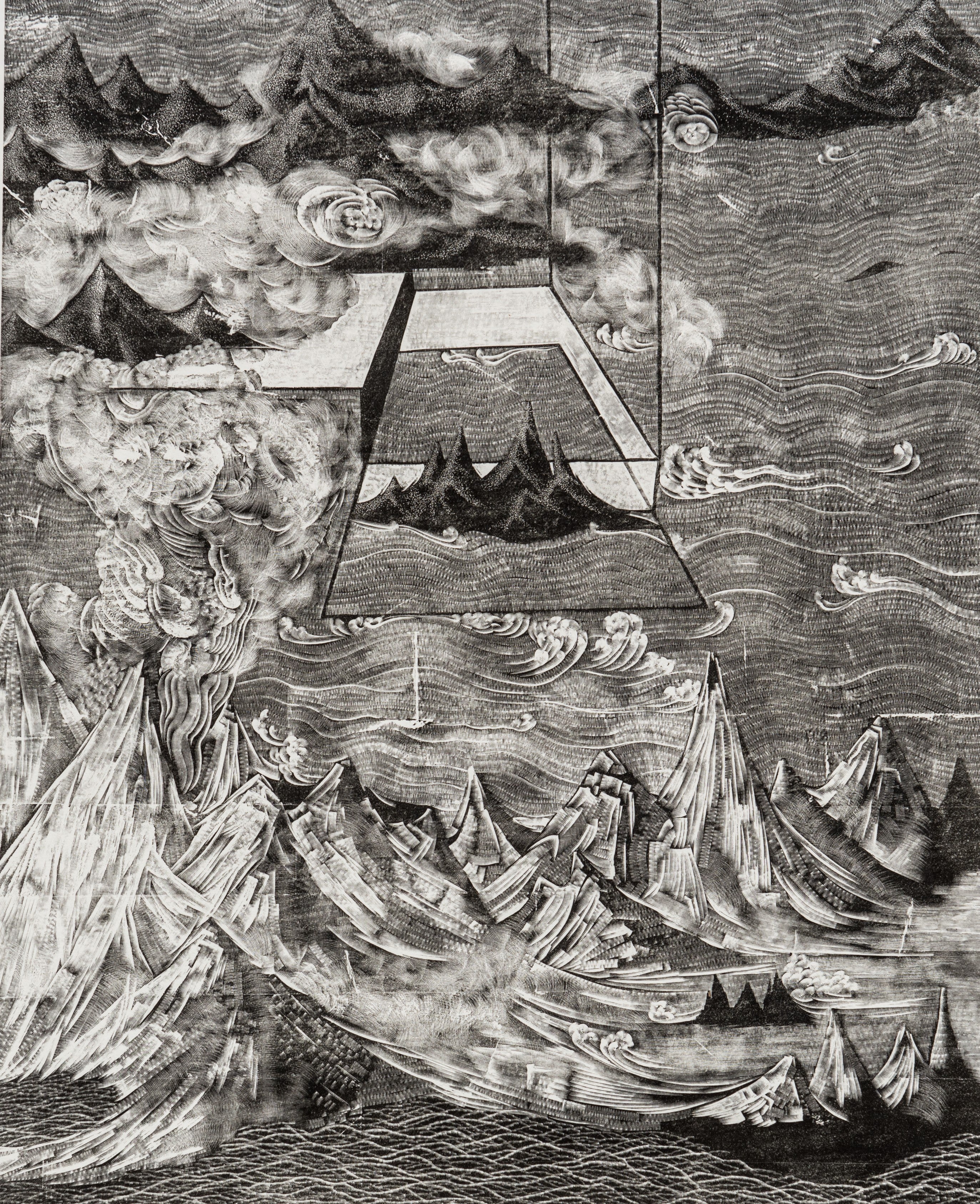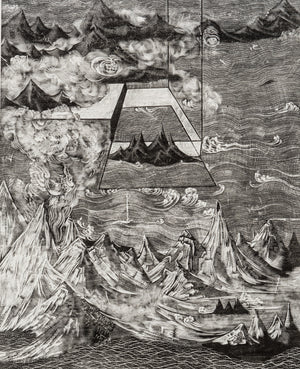Good as Water Four
Na Xu
Artwork Details
Artwork Description
Title:Good as Water Four
Artist:
Na Xu
Date:
Undated
Medium:
Woodcut
Dimensions:
40 × 50 cm (15.7 × 19.7 in)
1. Artwork Identification
Na Xu’s Good as Water Four is a monochromatic woodcut measuring 40 × 50 cm. The composition interlaces flowing, organic forms—mountains, rivers, and clouds—with a striking geometric structure reminiscent of architectural frameworks. Executed with refined carving techniques, the work displays a delicate balance between traditional landscape motifs and modern design sensibilities.
2. Artistic Style and Influences
The artwork belongs to a contemporary reimagining of the Shan Shui (mountain-water) tradition, incorporating its emphasis on nature while introducing abstract and architectural elements. Na Xu’s aesthetic draws inspiration from Daoist philosophy, particularly the symbolic attributes of water as flexible and yielding, paired with the rigid clarity of geometric forms. The stylistic duality recalls modernist abstraction and constructivist spatial logic, yet remains grounded in Chinese woodcut heritage.
3. Historical Context
The Title:, referencing the Daoist maxim “The highest good is like water,” situates the work within an enduring philosophical dialogue on harmony and adaptability. In the context of 21st-century Chinese printmaking, this piece reflects the ongoing revival of woodcut techniques, a Medium: historically significant in Chinese revolutionary and modern art movements, now employed for conceptual and poetic expression.
4. Provenance and Authenticity
Please contact the gallery directly for provenance information and authenticity certification.
5. Condition and Conservation
The print remains in excellent condition, exhibiting sharp lines, uniform inking, and no evidence of foxing, discoloration, or structural compromise. The edges are stable, indicating proper archival care.
6. Artistic Significance
Good as Water Four exemplifies Na Xu’s exploration of spiritual philosophy through visual form, uniting tradition and modernity in a refined print language. Its synthesis of flowing natural elements with controlled geometry positions the work as a key example of contemporary Chinese woodcut innovation, appealing to both collectors of modern prints and scholars of East Asian aesthetics.


